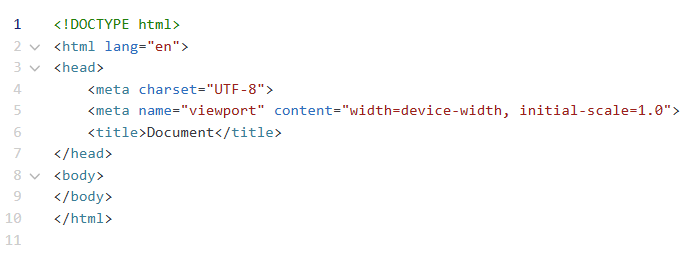
What Is Boilerplate Code?
Boilerplate code, often called boilerplate, refers to sections of repetitive code that developers use across multiple places with minimal changes. This type of code serves to set up essential structures or functionalities that are common in various projects or applications. While necessary, boilerplate code can sometimes feel tedious to manage, leading developers to seek tools and techniques that reduce its usage. This article explores the concept of boilerplate code, its role in programming, and how developers can optimize workflows to minimize redundancy.

Purpose of Boilerplate Code in Programming
- 1. Reusability and Efficiency
Reusable code templates help developers handle repetitive tasks across projects. This approach reduces the need to start from scratch, significantly improving efficiency in the development process. - 2. Consistency and Maintainability
Standardized code structures ensure uniformity across a project, making it easier to read, understand, and maintain. Consistency also enhances collaboration among team members by providing a clear and cohesive framework. - 3. Error Reduction
Using predefined templates minimizes the risk of errors in repetitive tasks. This leads to more reliable and higher-quality software by reducing common mistakes in frequently used segments. - 4. Abstraction and Modularity
Employing design patterns and abstraction mechanisms separates core logic from repetitive tasks. This modularity simplifies code management, updates, and modifications while keeping the overall structure clean. - 5. Performance Optimization
Optimized templates can improve program performance by eliminating unnecessary overhead. Advanced techniques can enhance efficiency while maintaining abstraction and flexibility. - 6. API Usability
Complex or poorly designed APIs can generate unnecessary repetitive tasks. Simplifying and streamlining these processes improves accessibility, making it easier for developers to integrate and work with APIs.
How Boilerplate Code Streamlines Development Processes
- Reducing Repetitive Tasks
Pre-written code templates offer a foundational structure for developers, eliminating the need to write repetitive code from scratch. This allows developers to focus on more complex and meaningful parts of the project, saving time and effort. - Boosting Automation and Efficiency
Automation tools, like AI-powered solutions and application templates, utilize pre-written snippets to streamline tedious tasks. This automation accelerates the development process while minimizing errors and ensuring adherence to best practices. - Improving Adaptability and Maintenance
Generic templates are designed to adapt easily to changes in data structures or project requirements. Their flexible and less type-specific nature requires fewer modifications, simplifying maintenance and keeping the codebase efficient. - Enhancing Focus on Core Logic
With repetitive tasks handled by templates, developers can prioritize the core logic and functionality of applications. This separation of concerns results in better-organized codebases and improved overall code quality. - Streamlining Development in Specialized Domains
In fields like Infrastructure as Code (IaC) and web development, templates provide a starting point for complex configurations. Tools like GitHub Copilot further enhance efficiency by offering intelligent suggestions, automating repetitive tasks, and accelerating development cycles.
Avoiding Boilerplate Code Overhead: Tips and Techniques
Generic Programming for Efficiency
Generic programming libraries, like Scrap Your Boilerplate, aim to simplify coding by reducing repetition. However, they often introduce performance overheads. To address this, developers can use structured multi-stage programming techniques. These techniques transform libraries into typed optimizing code generators, maintaining high-level abstraction while ensuring efficient execution comparable to hand-written code.
Multi-Stage Programming
Languages like MetaOCaml enable multi-stage programming, systematically eliminating performance overheads. By transforming code in stages, this approach combines the benefits of high-level abstractions with the efficiency of low-level optimizations, resulting in faster and more streamlined applications.
Strategies for Code Optimization
In specialized areas, such as video coding, optimization involves minimizing overhead by selecting the most cost-effective coding mode. Developers then recursively apply this process to coding subunits, reducing costs at each step. This ensures the final output is both efficient and optimized for performance.
Advantages of Using Boilerplate Code
1. Boosting Efficiency and Productivity
Pre-built templates and structures save time by providing reusable foundations for multiple projects. This allows developers to focus on complex, innovative aspects of the software instead of repetitive tasks.
2. Ensuring Scalability and Maintainability
Templates help create scalable and maintainable codebases by incorporating best practices and standardized structures. This makes managing and updating the code easier as projects grow and evolve.
3. Promoting Consistency
Consistency is essential in large projects, and reusable templates ensure a uniform structure throughout. This uniformity simplifies collaboration by providing a common framework for all team members.
4. Reducing Development Time
Pre-built solutions significantly speed up project setup and feature development. By eliminating the need to write foundational code from scratch, developers can deliver applications faster.
5. Improving Code Quality
High-quality templates often include best practices and standardized patterns. These features help developers write robust, reliable code while avoiding common mistakes.
6. Enhancing Team Collaboration
For teams working on extensive projects, shared templates provide a unified starting point. This shared foundation improves understanding, fosters better contributions, and strengthens teamwork.
Examples of Boilerplate Code in Web and Software Development
HTML Templates
In web development, HTML templates provide the foundational structure for a webpage. A basic HTML template includes essential elements like the doctype declaration, meta tags, and basic HTML elements.

To get detailed scientific explanations of boilerplate code, try Patsnap Eureka.

